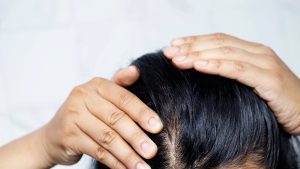Diffuse alopecia areata (DAA) is a type of alopecia areata that causes sudden, diffuse hair loss across the scalp. Unlike typical alopecia areata, which is characterized by patchy hair loss, DAA affects a larger area of the scalp and can result in more extensive hair loss.

The exact cause of DAA is not yet fully understood, although it is thought to be an autoimmune condition. In autoimmune conditions, the body’s immune system mistakenly attacks its own tissues, in this case, the hair follicles. It is also believed that genetic factors may play a role in the development of DAA, as it tends to run in families.
DAA can affect both men and women of all ages, although it is most commonly seen in individuals between the ages of 30 and 60. It is estimated that DAA accounts for up to 15% of all cases of alopecia areata, with a slightly higher incidence in women than men.
Symptoms of DAA typically include sudden hair loss across the scalp, which may occur over the course of several weeks or months. Unlike typical alopecia areata, there may be no distinct patches of hair loss, and the hair loss may be more diffuse and evenly distributed across the scalp. In some cases, the hair loss may be accompanied by itching, burning, or pain in the affected area.
The diagnosis of DAA is typically made based on a physical examination and a review of the individual’s medical history. A scalp biopsy may be performed to confirm the diagnosis and rule out other conditions that may cause diffuse hair loss, such as telogen effluvium or androgenetic alopecia.
While the prognosis for DAA can vary widely among individuals, it is generally considered to be a chronic condition that may require ongoing treatment and management. In some cases, hair regrowth may occur spontaneously, although this is not always the case. In severe cases of DAA, hair transplant surgery may be an option for restoring hair growth. Overall, early diagnosis and treatment are key in managing DAA and minimizing the impact of hair loss on quality of life.



